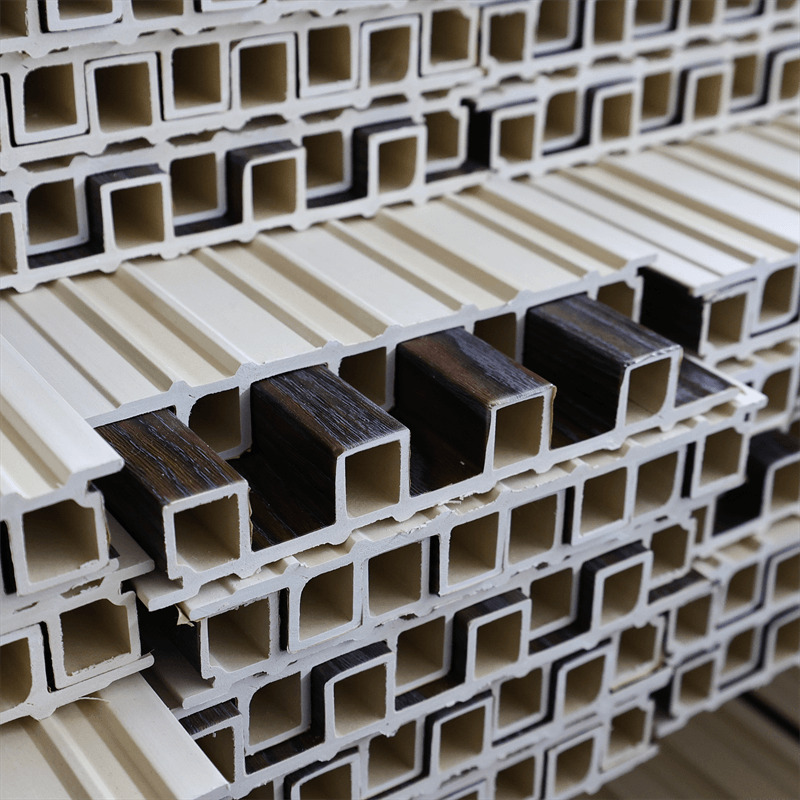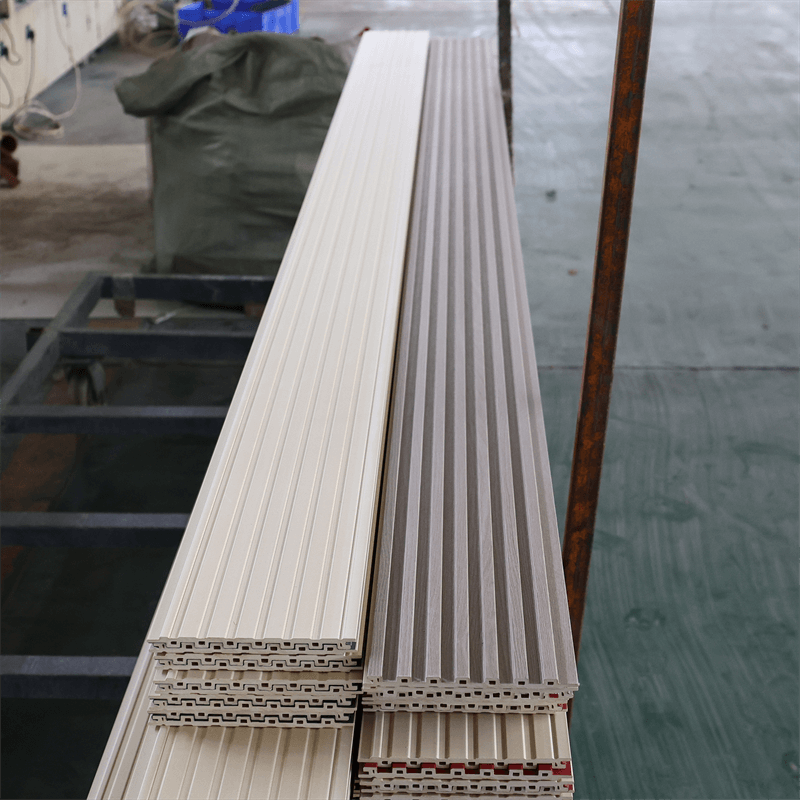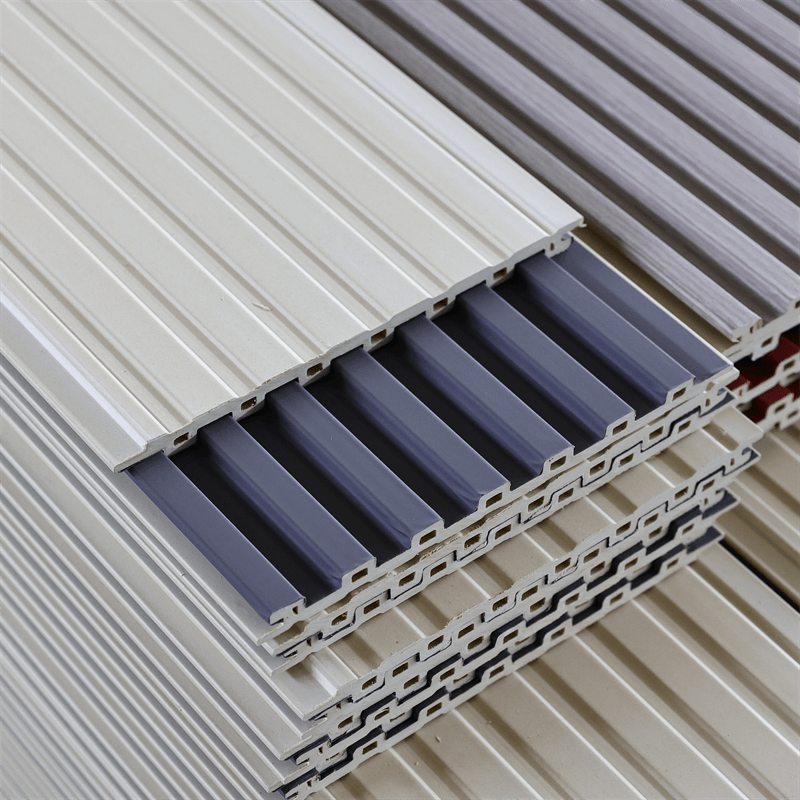In open spaces such as offices, educational institutions, and recreational areas, managing noise levels is crucial to create a conducive environment.
Acoustic design plays a significant role in mitigating noise disturbances and enhancing the overall experience for occupants.
WPC (Wood-Plastic Composite) wall panels have emerged as an effective solution in acoustic design, offering both functional and aesthetic benefits.
This essay explores the role of WPC wall panels in acoustic design for open spaces.
We will delve into the principles of acoustic design, the sound-absorbing properties of WPC panels, the importance of choosing reliable manufacturers and suppliers, and the integration of WPC panels into open space designs.
By understanding the significance of WPC wall panels in acoustic design, we can create harmonious and comfortable environments that promote productivity, learning, and relaxation.

I. Principles of Acoustic Design: Understanding Noise and Sound Control
To effectively address acoustic challenges in open spaces, it is crucial to understand the principles of acoustic design.
Noise is unwanted sound that can cause stress, distraction, and even health issues. Sound control involves managing the propagation, absorption, and reflection of sound waves within a space.
Acoustic design aims to create a balance between sound absorption and reflection to achieve optimal acoustic conditions.
This involves the strategic placement of sound-absorbing materials, such as WPC wall panels, to reduce reverberation and control noise levels.
By implementing proper acoustic design principles, open spaces can provide a comfortable and productive environment for occupants.
II. Sound-Absorbing Properties of WPC Wall Panels
WPC wall panels offer excellent sound-absorbing properties, making them a valuable asset in acoustic design.
The composition of WPC panels, with wood fibers and thermoplastic materials, contributes to their sound-absorbing capabilities.
The porous nature of the wood fibers allows the panels to trap and dissipate sound energy, reducing echoes and reverberation within a space.
This results in improved speech intelligibility, reduced background noise, and enhanced overall acoustics.
The thickness and density of the WPC panels also influence their sound-absorbing efficiency.
By incorporating WPC wall panels strategically, designers can create spaces with optimal acoustic performance, ensuring comfort and functionality.
III. Selecting Reliable Manufacturers and Suppliers
When considering WPC wall panels for acoustic design, it is crucial to choose reliable manufacturers and suppliers.
Reputable manufacturers adhere to strict quality control measures and conduct thorough testing to ensure the panels’ acoustic performance.
They use high-quality materials and innovative manufacturing techniques to produce WPC panels that meet industry standards and regulations.
Collaborating with reliable suppliers ensures access to authentic and certified WPC panels that deliver the desired sound-absorbing properties.
By partnering with trusted manufacturers and suppliers, architects and designers can confidently integrate WPC wall panels into their acoustic design plans.
IV. Integration of WPC Wall Panels in Open Space Designs
The integration of WPC wall panels in open space designs offers both functional and aesthetic benefits.
These panels can be installed on walls and partitions to enhance sound absorption and control reverberation.
They can be strategically placed in areas where noise levels are higher, such as open offices, cafeterias, and multipurpose halls.
Additionally, WPC wall panels come in a variety of designs, colors, and textures, allowing for creative and visually appealing installations that complement the overall interior design.
The versatility of WPC panels also allows for customization, enabling architects and designers to create unique acoustic solutions that align with the specific needs of the space and its occupants.
WPC wall panels play a vital role in acoustic design for open spaces, offering sound-absorbing properties that enhance comfort and functionality.
By understanding the principles of acoustic design, designers can strategically incorporate WPC panels to control noise levels and create harmonious environments.
Choosing reliable manufacturers and suppliers ensures access to high-quality WPC panels that deliver the desired acoustic performance.
The integration of WPC wall panels in open space designs provides both functional benefits, such as improved sound absorption, and aesthetic advantages, allowing for creative and visually appealing installations.
By prioritizing acoustic design and leveraging the capabilities of WPC wall panels, we can transform open spaces into areas that promote productivity, learning, and relaxation, ultimately enhancing the overall experience for occupants.

Moreover, the selection of reliable manufacturers and suppliers is crucial in ensuring the authenticity and effectiveness of WPC wall panels’ sound-absorbing properties.
Reputable manufacturers follow stringent quality control measures and conduct rigorous testing to meet industry standards and regulations.
They use high-quality materials and advanced manufacturing techniques to produce WPC panels that deliver exceptional sound absorption.
Collaborating with trusted suppliers ensures access to genuine and certified WPC wall panels that meet the desired acoustic requirements.
Architects and designers can rely on these manufacturers and suppliers to provide reliable and effective acoustic solutions.
The integration of WPC wall panels into open space designs offers numerous advantages.
These panels can be strategically placed on walls and partitions to control reverberation and reduce echo, creating a more pleasant and productive environment.
In open offices, where noise levels can be a significant challenge, WPC wall panels can be used to minimize distractions and improve speech intelligibility.
Similarly, in educational institutions such as classrooms and lecture halls, WPC panels can contribute to better learning environments by reducing noise disruptions and enhancing concentration.
One of the notable benefits of WPC wall panels is their versatility in design.
They are available in a wide range of styles, textures, and colors, allowing designers to integrate them seamlessly into various architectural and interior design concepts.
Whether it’s a sleek and modern office space or a vibrant and creative educational environment, WPC panels can be customized to match the aesthetic vision of the project.
The flexibility in design options enables architects and designers to create visually appealing installations that not only enhance the acoustic performance but also contribute to the overall ambiance and aesthetic appeal of the space.
In conclusion, the use of WPC wall panels in acoustic design for open spaces offers significant advantages.
These panels provide excellent sound absorption, reducing reverberation and controlling noise levels.
By selecting reliable manufacturers and suppliers, architects and designers can ensure the authenticity and effectiveness of WPC wall panels’ sound-absorbing properties.
The integration of WPC panels in open space designs enhances the comfort, productivity, and overall experience of the occupants.
With their versatility in design options, WPC wall panels can be seamlessly incorporated into various architectural and interior design concepts.
As we continue to prioritize acoustic comfort and functionality, WPC wall panels emerge as a valuable solution for enhancing the acoustic performance of open spaces, contributing to a more harmonious and enjoyable environment.

